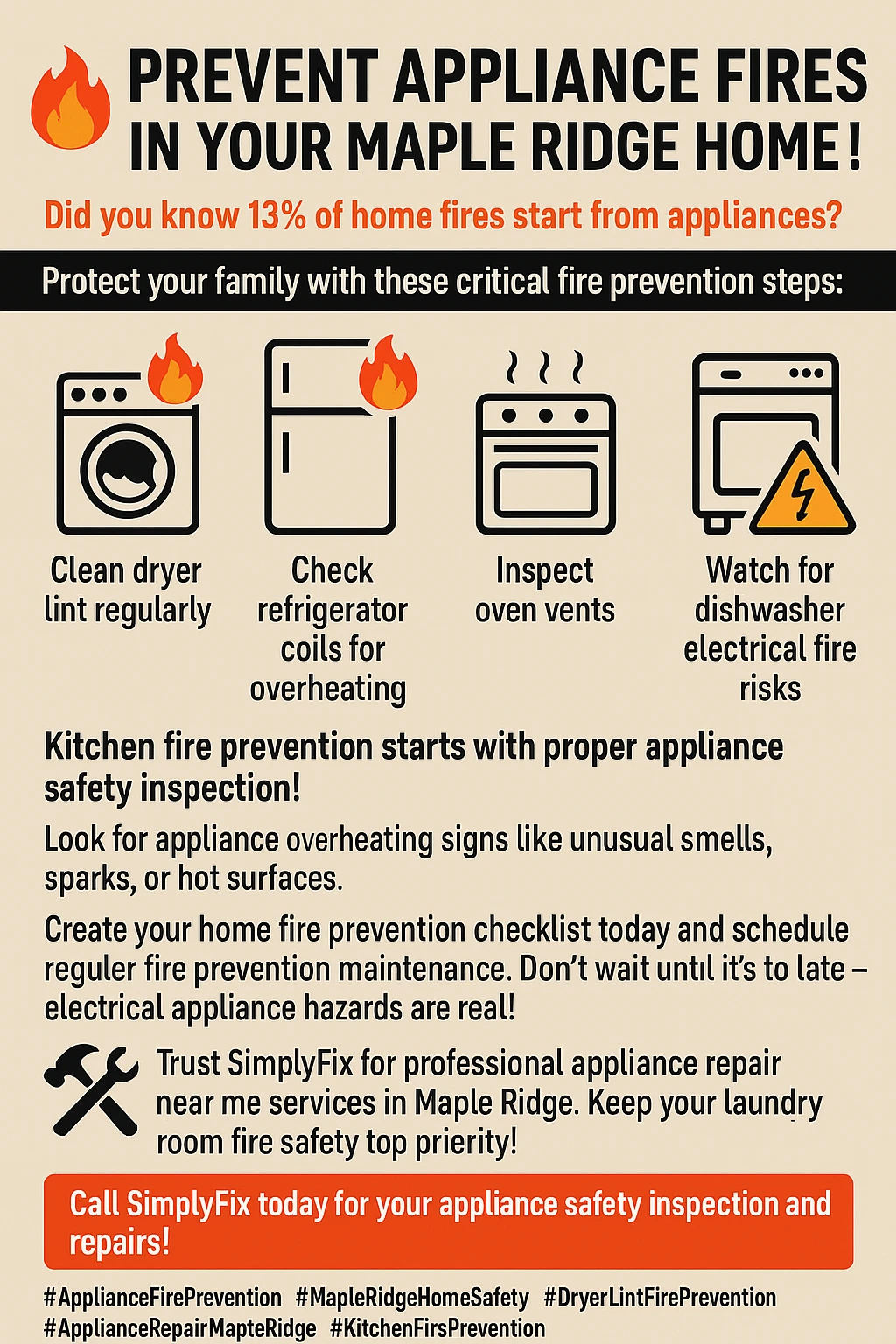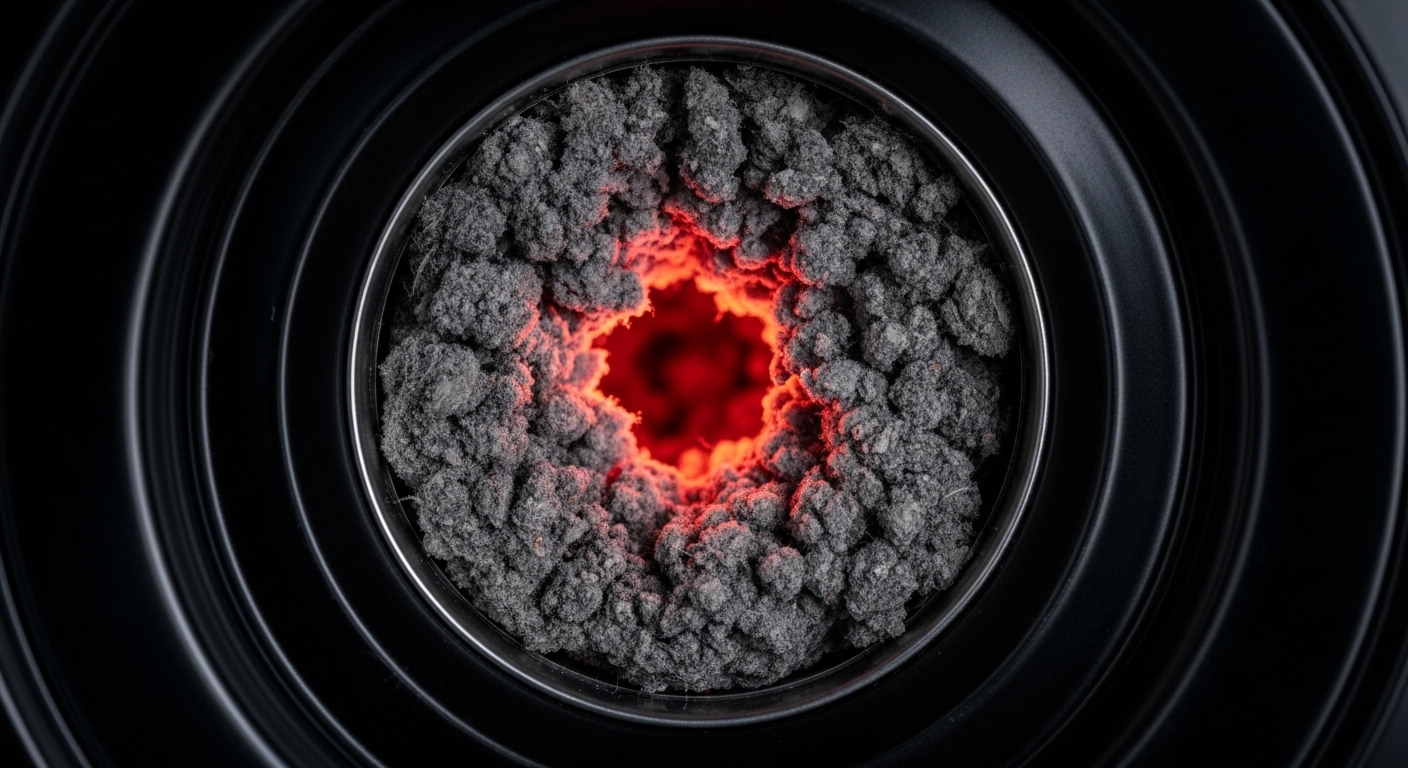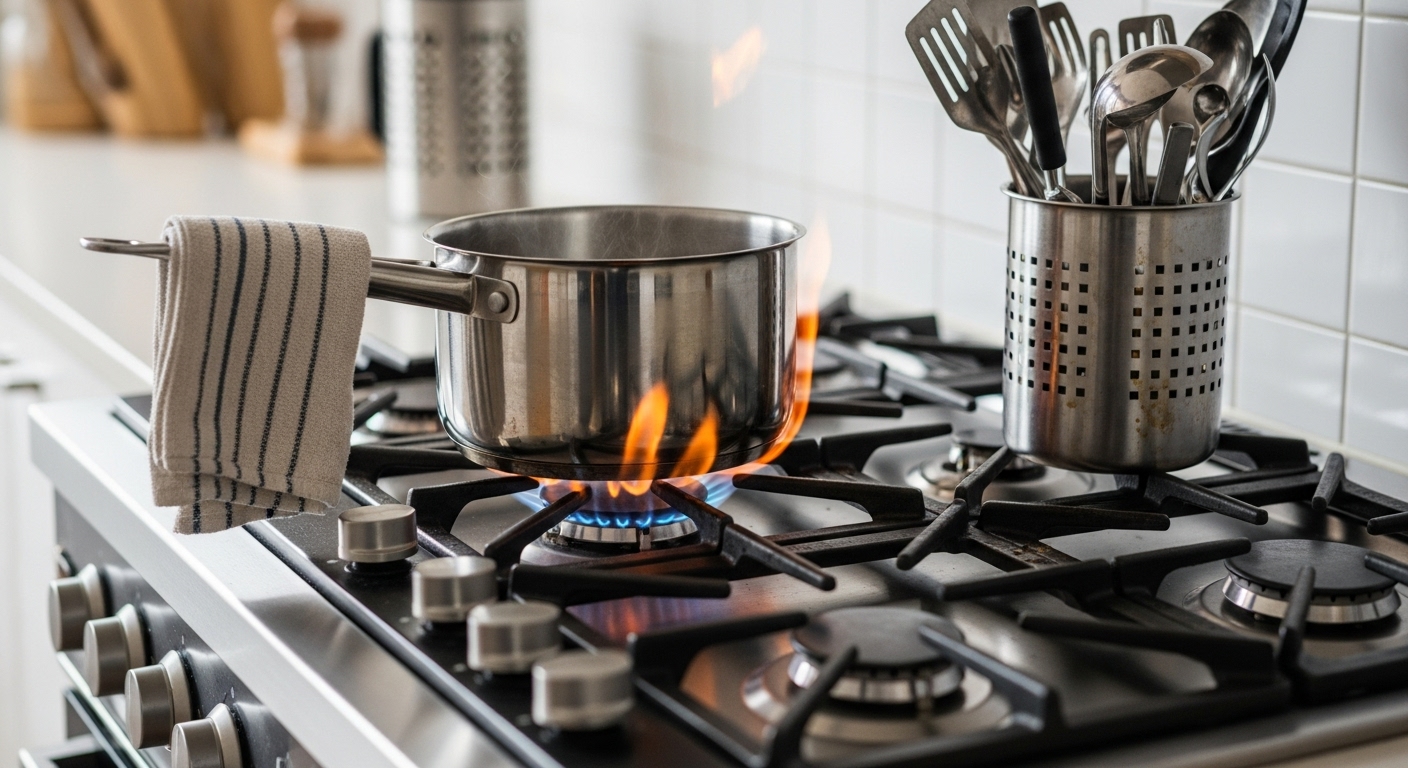Concerned about the fire risks lurking in your home’s everyday appliances? Discover the critical prevention steps that could save your Maple Ridge family from becoming part of the alarming statistics – with over 24,200 residential electrical fires reported annually in North America alone.
Picture this: you’re settling in for the night, confident that your home is safe and secure. But hidden within your seemingly harmless household appliances – from that trusty dryer to your reliable refrigerator – fire hazards are silently developing. As a home improvement enthusiast who’s spent countless hours researching residential safety, I’ve learned that appliance fires represent one of the most preventable yet devastating threats to our homes and families.
The reality is sobering. In 2021 alone, an estimated 24,200 residential building electrical fires were reported to fire departments, causing 295 deaths, 900 injuries, and over $1.2 billion in property loss. What’s even more alarming? Many of these disasters could have been prevented with proper maintenance and awareness. For us Maple Ridge homeowners, understanding how appliance fires start, spread, and can be stopped isn’t just helpful knowledge – it’s absolutely essential for protecting everything we hold dear.
As someone who’s witnessed firsthand the aftermath of preventable home fires, I can tell you that the “it won’t happen to me” mentality is dangerous. Every home has multiple potential fire sources running 24/7, and without the right prevention strategies, we’re essentially playing with fire – literally.
Key Outtakes
- Failure to maintain appliances through regular cleaning represents the leading preventable cause of residential fires – with 31% of clothes dryer fires resulting from neglected lint trap cleaning and similar maintenance negligence affecting other appliance categories
- Electrical overload and improper cord usage create immediate fire hazards that can be eliminated by plugging major appliances directly into wall outlets and avoiding extension cord dependency
- Early warning signs including unusual odors, sounds, and performance changes allow homeowners to intervene before catastrophic fires occur, making vigilant observation a critical safety practice
- Different appliance types require tailored prevention strategies – clothes dryers need lint management, cooking appliances demand constant supervision, refrigerators require ventilation maintenance, and all electrical connections need regular inspection
- Comprehensive home fire safety systems integrating smoke alarms, professional maintenance, and emergency protocols can reduce residential fire rates by up to 91% when properly implemented

Understanding How Appliance Fires Actually Start and Spread
Let me break down something that might surprise you: appliance fires don’t just randomly happen. They follow predictable patterns that, once understood, become incredibly preventable. After diving deep into fire safety research and talking with local fire prevention experts, I’ve discovered that most appliance fires develop through three main mechanisms that every homeowner needs to recognize.
The first and most common pathway involves what experts call “thermal accumulation.” Think of it like this – your appliances generate heat during normal operation, and when that heat can’t escape properly due to blockages, wear, or poor ventilation, temperatures rise to dangerous levels. This is exactly what happens when lint builds up in your dryer vent or when dust accumulates on your refrigerator’s condenser coils. The heat that should be dissipating safely becomes trapped, creating the perfect conditions for ignition.
The second mechanism involves electrical failures – damaged wiring, aging components, or circuit overload. Here’s what’s particularly sneaky about electrical fires: they can smolder for hours inside walls or appliance housings before producing visible flames or smoke. A frayed cord behind your washing machine or a failing relay switch in your refrigerator can generate sparks and heat that ignite surrounding materials without any obvious warning signs. 
The third major cause involves accumulation of combustible materials, particularly grease and residue in cooking appliances. Every time you cook, microscopic particles of grease become airborne and settle on surfaces throughout your kitchen. Over time, this creates a film of highly flammable material on your stovetop, inside your oven, and within your exhaust hood system. When exposed to high heat, these accumulated residues can ignite rapidly and spread flames much faster than most homeowners expect.
Understanding these mechanisms changed how I approach appliance maintenance in my own home. Instead of thinking about cleaning as a chore, I now see it as active fire prevention. Every time I clean the lint trap in my dryer or wipe down grease from my stovetop, I’m literally removing fuel that could feed a potential fire. This mindset shift makes maintenance feel less like busy work and more like protecting my family’s safety.
Clothes Dryers: The Hidden Fire Hazard in Your Laundry Room
Here’s something that absolutely shocked me when I first learned about it: clothes dryers cause more residential fires than almost any other single appliance. We’re talking about 13,820 to 17,700 reported fires annually, resulting in seven deaths, 344 injuries, and $233 million in property damage every year. What makes this even more concerning is that the majority of these fires are completely preventable with proper maintenance practices.
The mechanism behind dryer fires is both simple and terrifying. Every load of laundry produces lint – those tiny fibers that come off your clothes during the drying process. This lint is essentially tinder, with an extremely low ignition temperature. When lint accumulates in the lint trap, ductwork, or exhaust vent, it restricts airflow and causes your dryer to work harder and run hotter. Eventually, the combination of accumulated lint and elevated temperatures reaches the ignition point, and suddenly you have a fire burning inside your dryer and potentially spreading through the vent system into your walls. 
What really drives this point home for me is the statistic that 31% of dryer fires result from one simple oversight: failure to clean the lint trap regularly. Think about that – nearly one-third of these devastating fires could be prevented by spending thirty seconds before or after each load to remove lint from the filter. It’s such a small action with such enormous consequences that it changed my entire approach to laundry day.
But here’s where it gets more complex: cleaning the lint trap is just the beginning. Lint also accumulates in places you can’t easily see – inside the transition hose between your dryer and the wall, in the exterior vent, and even behind and beneath the dryer unit itself. This hidden lint buildup is why many dryer fires occur even in homes where owners think they’re being careful about lint trap maintenance. The complete prevention strategy requires addressing all these accumulation points, not just the obvious ones.
I learned this lesson the hard way when I noticed my clothes were taking longer to dry than usual. When I investigated, I discovered that despite regular lint trap cleaning, my exterior vent was almost completely blocked with lint buildup. The technician who cleaned it out explained that this type of blockage causes back-pressure that forces your dryer to run much hotter than designed, dramatically increasing fire risk. Now I have my vent system professionally cleaned annually, and I check the exterior vent regularly to ensure it’s blowing air freely.
The type of ductwork you use also matters more than most people realize. Those flexible plastic or accordion-style ducts that come with many dryer installations are actually fire hazards themselves. They sag over time, creating low spots where lint accumulates, and the ridged interior surface traps lint much more readily than smooth-walled ducts. Replacing these with rigid metal ducts or flexible metal alternatives significantly reduces fire risk and improves drying efficiency.
Kitchen Appliances: Managing the Highest-Risk Fire Zone in Your Home
If there’s one room in your house where fire prevention deserves obsessive attention, it’s the kitchen. Cooking fires account for approximately 170,000 residential fires annually, resulting in 135 deaths and more than $494 million in property damage. What makes kitchen fires particularly dangerous is how quickly they can spread and how often they occur when families are home and active in the space. 
The fundamental challenge with cooking appliances is that they’re designed to generate high heat in an environment filled with combustible materials. Every time you cook, you’re working with hot oils and grease, paper packaging, dish towels, and often loose clothing – all potential fuel sources. Add in the fact that cooking requires multitasking and divided attention, and you have a recipe for disaster.

Recent Comments